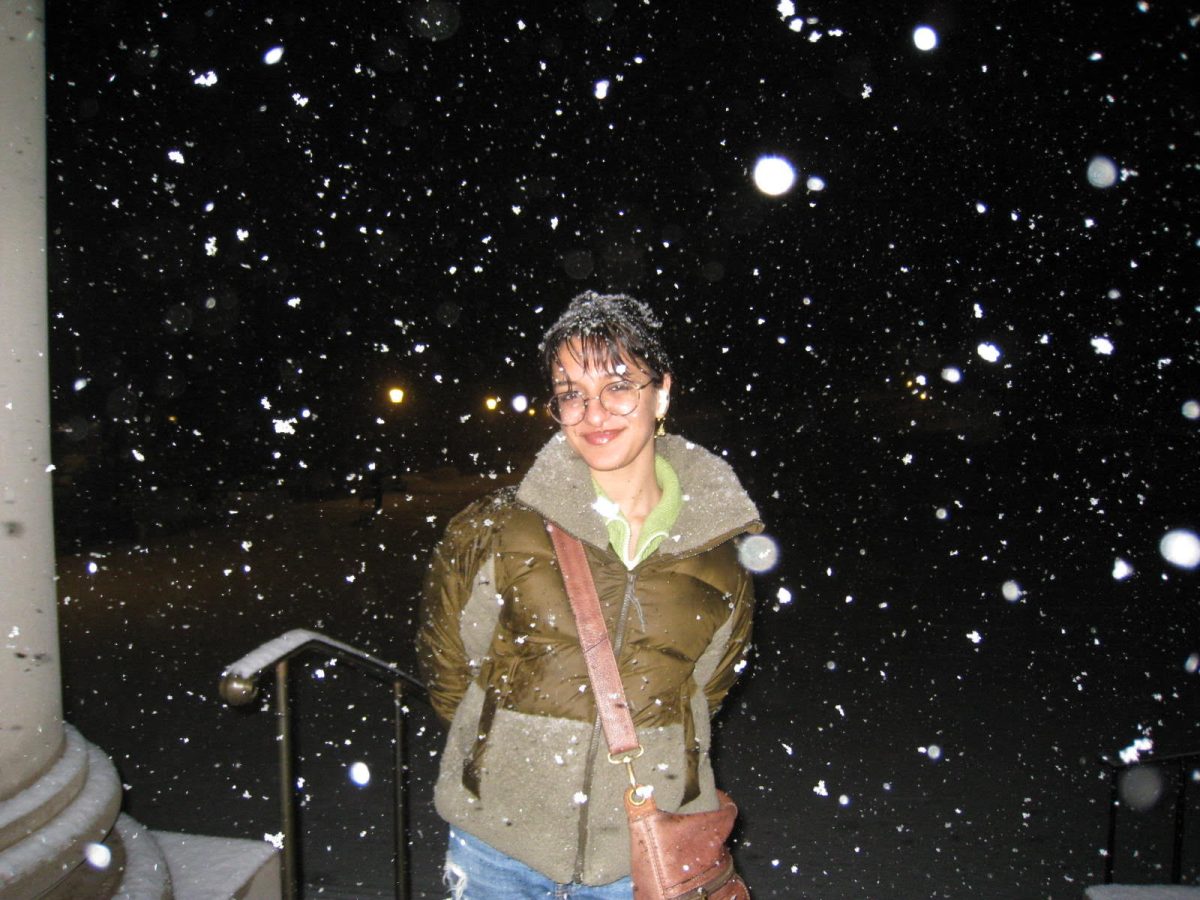
Thrice daily, melodies ranging from “Zombie” to “Loch Lomond” ring out from the top of Thompson Chapel, entertaining passersby. The songs are often a welcome reprieve from a busy day — but few people know the identities of those behind the tunes, and even fewer understand the process involved in producing them.
One first-year student speculated on the identities of the bellringers in an interview with the Record. “I think it’s a student,” Calypso Maazel ’28 said. “It would be really nice to know. It’s fun to hear songs that you recognize.”
Maazel is right: The students who comprise the Guild of Bellringers supply the College with afternoon tunes. “It’s like you’re on aux for the whole campus,” said Rachel Schmidt ’25, one of the head bellringers of the guild.
After climbing up 46 stairs, Schmidt begins her shift by arranging music for the 10-note carillon — the wooden structure that houses the 10,762-pound bells — and setting it to either E-flat or A-flat. She then vigorously strikes the wooden levers that control each bell with her hands, often employing her feet to create the necessary chords. “It’s definitely a workout,” she said.
But how does one become a bellringer? The audition process begins in the spring with an advertisement in Daily Messages. Prospective carillonneurs are then called to perform one prepared melody and a song they must sight-read for the College to hear. “We try to put out an apology before auditions start because there’s one day where there’s a lot of bells,” Schmidt said.
“It’s actually fairly competitive,” fellow head bellringer Nate Welsh ’26 said. “My year, I think there were like 20 or so people for only three or four slots.”
After performing Edward Elgar’s “Salut d’Amour” during his audition, bellringer Sebastien Narayanan ’27 was accepted into the guild. “Going into the audition, it’s your first time playing the instrument, so you just have to go for it,” he said.
With limited or no preparation offered to auditionees, prospective bellringers can stand out by displaying strong internal rhythm and sight-reading abilities. “A great bellringer will make a mistake and keep going, maintaining rhythm and letting the bells do their thing,” Welsh said. “You can’t hear and self-correct when you’re up there.”
After spring tryouts, newly-accepted guild members do not touch the bells again until the fall semester. “The thing is, there’s no carillon replica anywhere on campus — you just have to jump into it without any training,” Narayanan said. “You need a lot of trust and confidence in yourself, and it’s okay if you make a mistake.” Some guild members practice on a piano, but it’s never quite the same as the actual instrument. “The whole first semester is kind of a learning curve,” Schmidt added.
This shared responsibility creates a bond among individuals that are part of the small group. “It’s a space for people who just like to make noise in a bell tower of the church,” Welsh said.
The bellringers remain largely anonymous at the College, which alleviates some of the pressure of performing for the school while offering those in the guild control. “It’s almost like power,” Welsh said. “Hundreds of people are hearing you play your silly little melodies, so you better make them good silly little melodies.”








